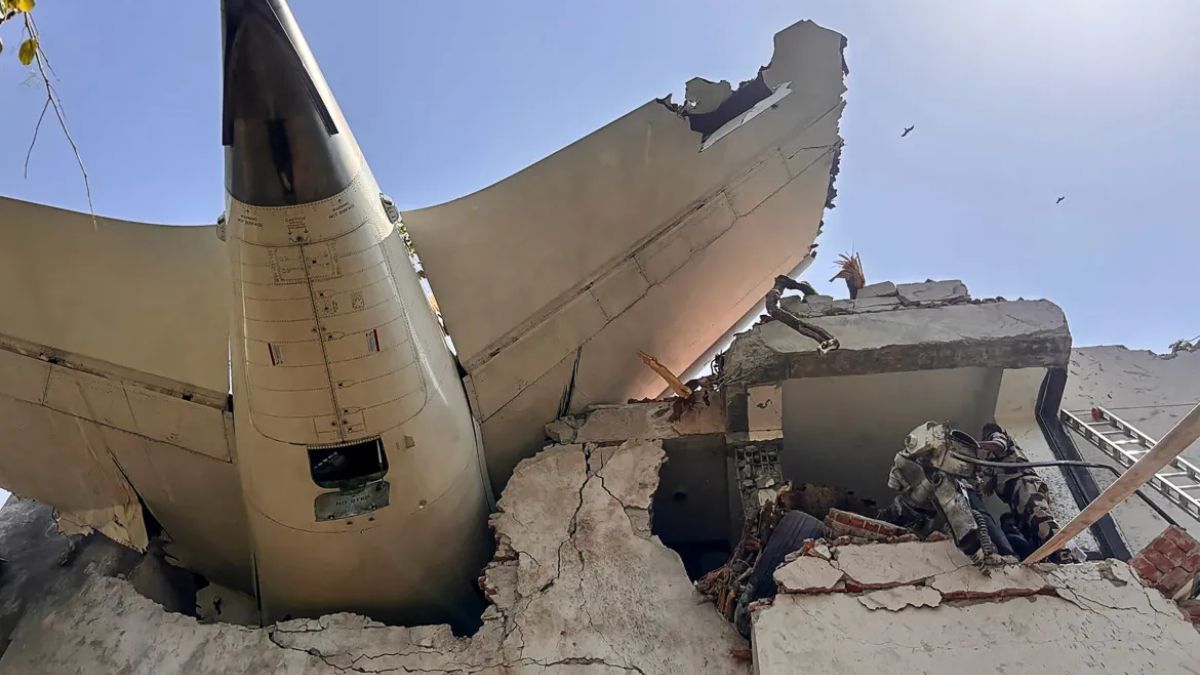Days after the devastating Air India crash in Ahmedabad — one of the deadliest aviation disasters in the country’s history — a new theory is making waves online about what might have gone wrong.
The Boeing 787 Dreamliner, operating as Flight AI-171, was en route from Ahmedabad to London Gatwick when it crashed into a residential hostel shortly after takeoff. The incident claimed the lives of at least 274 people, including passengers, crew, and people on the ground.
Now, a video by international aviation expert Captain Steve is going viral on X (formerly Twitter). In it, he offers a possible explanation for the tragedy, suggesting that a critical cockpit error may have triggered the crash.
The aircraft was flown by two highly experienced pilots on board. The pilots were identified as Captain Sumeet Sabharwal and First Officer Clive Kunder, who had over 9,000 hours of flying experience.
According to Captain Steve, the pilots may have accidentally retracted the flaps instead of the landing gear during the initial climb, a move he described as “a tragic mistake.”
But first, what are airplane flaps, and what do they do?
Flaps are movable panels located along the trailing edge of an aircraft’s wings.
They are extended during takeoff and landing to increase the wing’s surface area, which provides more ’lift’, an aerodynamic force that keeps the plane airborne.
This additional lift is crucial during low-speed flight, like takeoff or landing. On the Boeing 787, the standard procedure is to set flaps to 5 (or higher) for takeoff, then gradually retract them only as the aircraft climbs and picks up speed.
Flaps are adjusted manually by either pilot, depending on the situation. In cruise flight, they remain retracted.
What Captain Steve believes went wrong
In a conversation with CNN-News18, Captain Steve explained what he thinks happened in the cockpit moments after takeoff.
As the aircraft begins to climb, the usual command is given: “Gear up.” But, he asked, what if the co-pilot accidentally pulled the flap lever instead of the gear lever?
“If that happened — and this is a big if — this explains a lot about why this airplane stopped flying, why the lift over the wings died,” Steve said.
At the low speeds of takeoff, retracting the flaps too soon would instantly reduce lift, he said. Combine that with the landing gear still extended, which increases drag, and you have a “bad combination,” he explained.
He breaks it down further: “The flaps are retracting, all that extra lift you’re producing in the wings goes away. You’re already slow… and those great big landing gears are still down, creating drag. This is a bad combination.”
In the viral video, Captain Steve points out that the nose of the plane initially rises to about 2.5 degrees — but it doesn’t go any higher. “The gear never moves. The wings barely flex. That’s a visual sign — very little lift is being generated,” he noted.
Seconds later, the nose begins to drop. “That’s the airplane trying to create more airflow over the wings to compensate. But it’s too slow, too heavy. The lift is gone.”
In Steve’s words, the pilot may have tried one final manoeuvre to save the flight — pulling the nose up even more.
“The airplane begins to kind of wallow… the pilot pulls back even more on the nose. That aggravates the whole thing."
“They might’ve had a chance at 1,500 feet, maybe even 1,000, to recover,” he said. “But they never got there.”
Ruling out engine loss, the bird strike theories
Captain Steve also dismisses other common theories doing the rounds online, like dual engine failure or a bird strike.
He also notes that both engines appear to be working normally in the available footage. “No flames, no sparks. Nothing to suggest a power failure.”
On the theory that birds could’ve hit the engines, Steve is doubtful. “Could both engines have been taken out by a flock of birds? Possible — but we’d expect to see smoke, fire, or debris. There’s none.”
He also rules out fuel contamination. “The engines showed no signs of sputtering on the roll. Everything up to rotation looked textbook.”
For Captain Steve, the signs point not to mechanical failure, but to an aerodynamic one. A plane can still lose lift even with working engines, especially if the flaps are mistakenly retracted too early.
“It’s heartbreaking,” he concludes. “These pilots may have done everything they could. But in those few seconds, the margin for error was razor-thin. And one wrong move may have cost 241 lives.”
While this is just a theory, investigators are now analysing the aircraft’s black box and trying to uncover what really happened.
With input from agencies
)